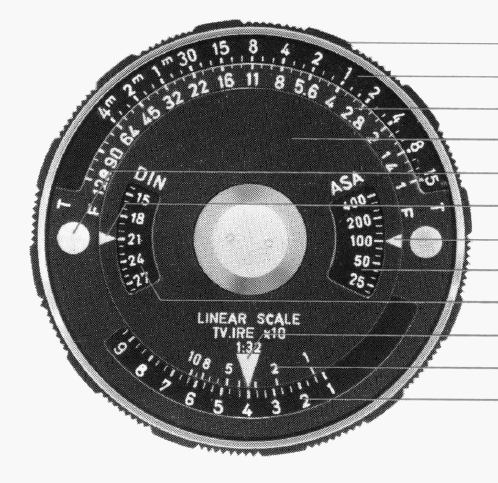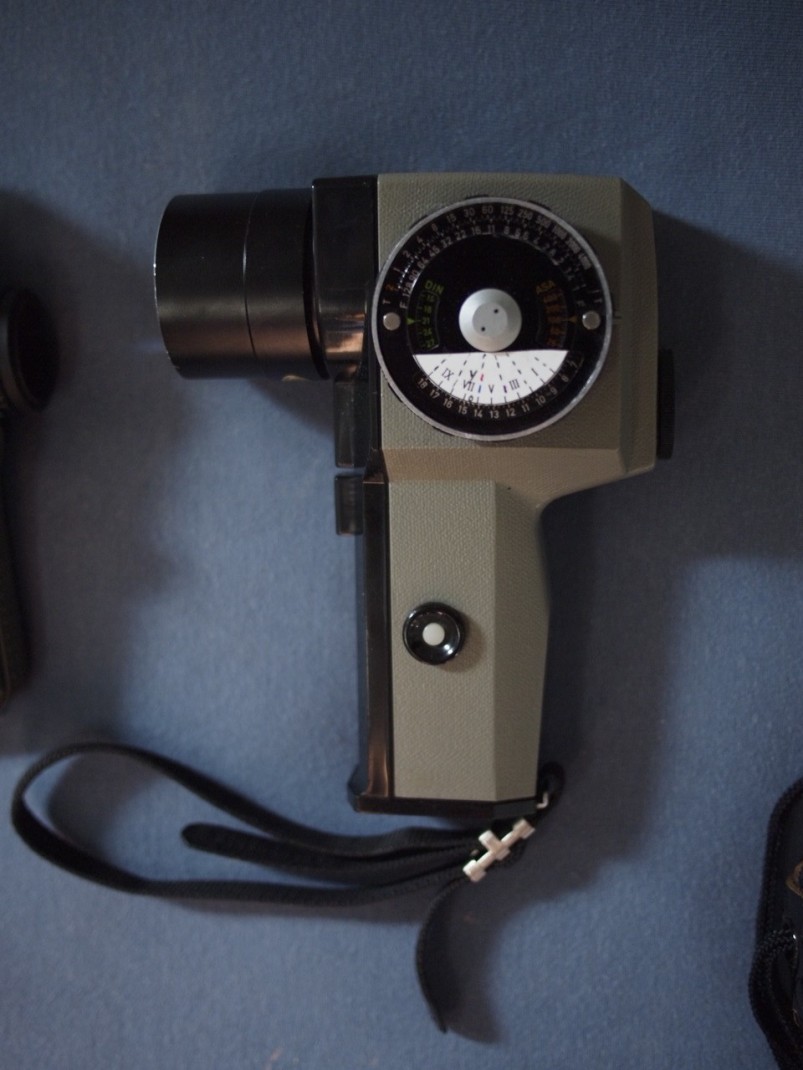Doug Kerr
Well-known member
Let me say at the outset that I have absolutely no experience in the use of the Zone System for exposure planning. What follows is an analysis on wholly "theoretical" terms. Its conclusions and implications might be misleading in the real world.
************
Many discussions of the use of the Zone System for exposure planning with digital cameras assume that, "for openers", a shot metered (let's say in spot mode) on a certain object in the scene will (if we don't in any way intervene) get a photographic exposure such that this object will have an exposure result we would consider "appropriate" for Zone V.
What is that likely to mean in technical terms?
Let me start with some stuff about exposure metering. Assume that we have a camera whose internal automatic exposure control metering system:
• works on the basis of measuring the average luminance of the scene.
Then, if we shot a test scene of uniform luminance, we might expect that the photometric exposure for that entire frame would be about 18% of the saturation photometric exposure.
But we are interested in the metering system being used in, for example, its "spot" mode (not consistent with the first assumption above). What then?
Well, this might be different for other camera makes (in which all bets are off), but in Canon cameras, generally, if we aim the camera at a certain uniform-luminance test scene, the exposure that is set will be the same for any metering pattern, for example:
• Center-weighted average
• Partial
• Evaluative
• Spot
and maybe even point (I don't have any machines that have that).
So if that is the case, if, with the metering in spot mode, we meter on an object, the photographic exposure set by the camera will give that object a photometric exposure of 18% of saturation.
Depending on just what kind of tonal scale curves are built into the camera processing, that might be expected to give an RGB color whose luminance was about 18% of maximum (for a neutral scene, perhaps sRGB 118, 118, 118).
Is that "appropriate" for an object we consider deserving of "Zone V" treatment under Zone System practice?
Is that a good color for a "Zone V" gray cat? Who knows.
But the other issue is how will this work for the span of other zones. It is hard to speak of the lower zones, owing to differences in camera dynamic range.
But with regard to the upper end, in theory, if Zone V gets 18% of the saturation photometric exposure, then Zone VII would get about 1/2 stop short of saturation. Thus Zone VII is probably a good estimate of the highest zone we can safely accommodate.
But Zone System practice often assumes that we may have objects with significant texture in Zones II through VIII. And the basic assumption here will not safely accommodate that.
So if we do have objects we consider to be in Zone VII (and they in fact do have luminance two stops higher than objects we consider to in Zone V), we probably need to expose at least 1/2 stop, and more safely 1 stop, less than the metered exposure the camera would use after spot metering on our "Zone V". Of course this can be readily done by setting an exposure compensation of -0.5 EV or -1 Ev before we meter on out "Zone V" object.
On the other hand, some authors speak of Zone VII as the proper "rating" for a bright region for which we might accept rendering that is "a bit washed out". In that case, if the brightest region we have is "Zone VII" (under that outlook), then using the metered exposure as is for a Zone V object would seem to work out well.
************
I would be anxious to learn if this wholly-theoretical outlook comports at all with actual experience on the part of those who use the Zone System in connection with digital cameras.
Best regards,
Doug
************
Many discussions of the use of the Zone System for exposure planning with digital cameras assume that, "for openers", a shot metered (let's say in spot mode) on a certain object in the scene will (if we don't in any way intervene) get a photographic exposure such that this object will have an exposure result we would consider "appropriate" for Zone V.
What is that likely to mean in technical terms?
Let me start with some stuff about exposure metering. Assume that we have a camera whose internal automatic exposure control metering system:
• works on the basis of measuring the average luminance of the scene.
Now, few cameras actually have that mode, but sit tight.
• is "calibrated" consistent with the ISO standard for internal exposure metering systems.That is defined in a way that one of the inputs to its "equation" is the ISO speed of the film or digital sensor.
• feeds the "equation" in the automatic metering system not the ISO speed of the sensor but rather the ISO SOS value (which is about 1/2 stop less).We might expect this for modern digital cameras, where typically the "sensitivity" is stated in terms of ISO SOS.
Then, if we shot a test scene of uniform luminance, we might expect that the photometric exposure for that entire frame would be about 18% of the saturation photometric exposure.
Not 12.8%? No, that would be the result if we actually fed the "exposure equation" the ISO speed of the sensor, as intended.
But we are interested in the metering system being used in, for example, its "spot" mode (not consistent with the first assumption above). What then?
Well, this might be different for other camera makes (in which all bets are off), but in Canon cameras, generally, if we aim the camera at a certain uniform-luminance test scene, the exposure that is set will be the same for any metering pattern, for example:
• Center-weighted average
• Partial
• Evaluative
• Spot
and maybe even point (I don't have any machines that have that).
So if that is the case, if, with the metering in spot mode, we meter on an object, the photographic exposure set by the camera will give that object a photometric exposure of 18% of saturation.
Depending on just what kind of tonal scale curves are built into the camera processing, that might be expected to give an RGB color whose luminance was about 18% of maximum (for a neutral scene, perhaps sRGB 118, 118, 118).
Is that "appropriate" for an object we consider deserving of "Zone V" treatment under Zone System practice?
Is that a good color for a "Zone V" gray cat? Who knows.
But the other issue is how will this work for the span of other zones. It is hard to speak of the lower zones, owing to differences in camera dynamic range.
But with regard to the upper end, in theory, if Zone V gets 18% of the saturation photometric exposure, then Zone VII would get about 1/2 stop short of saturation. Thus Zone VII is probably a good estimate of the highest zone we can safely accommodate.
But Zone System practice often assumes that we may have objects with significant texture in Zones II through VIII. And the basic assumption here will not safely accommodate that.
So if we do have objects we consider to be in Zone VII (and they in fact do have luminance two stops higher than objects we consider to in Zone V), we probably need to expose at least 1/2 stop, and more safely 1 stop, less than the metered exposure the camera would use after spot metering on our "Zone V". Of course this can be readily done by setting an exposure compensation of -0.5 EV or -1 Ev before we meter on out "Zone V" object.
On the other hand, some authors speak of Zone VII as the proper "rating" for a bright region for which we might accept rendering that is "a bit washed out". In that case, if the brightest region we have is "Zone VII" (under that outlook), then using the metered exposure as is for a Zone V object would seem to work out well.
"Well, I used to think this was a mid-sized car until I found that lovely parking spot marked "compact cars only".
************
I would be anxious to learn if this wholly-theoretical outlook comports at all with actual experience on the part of those who use the Zone System in connection with digital cameras.
Best regards,
Doug


